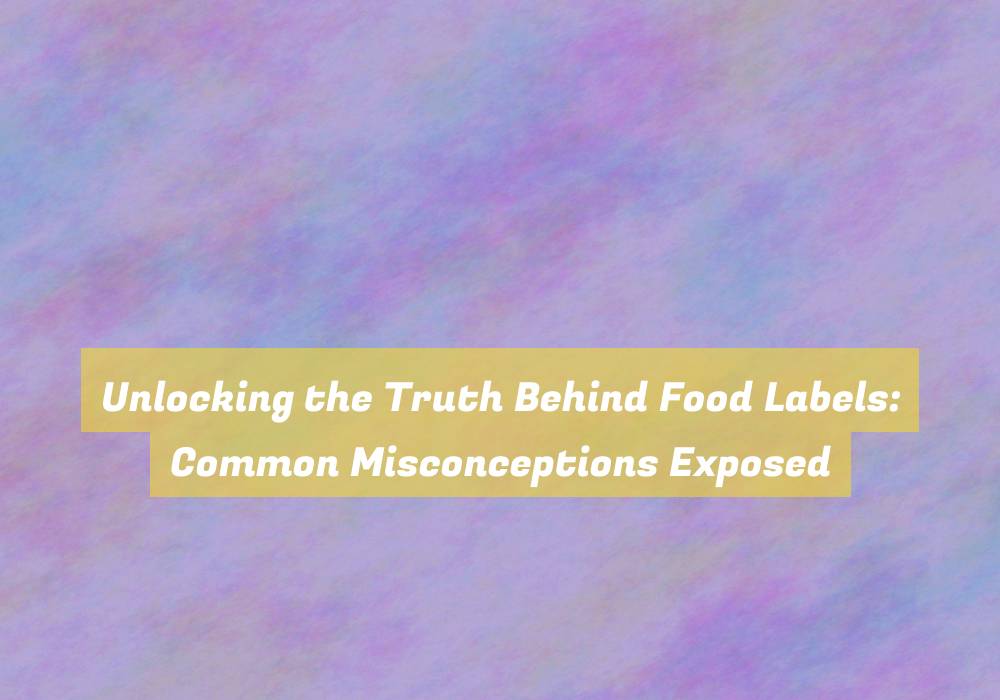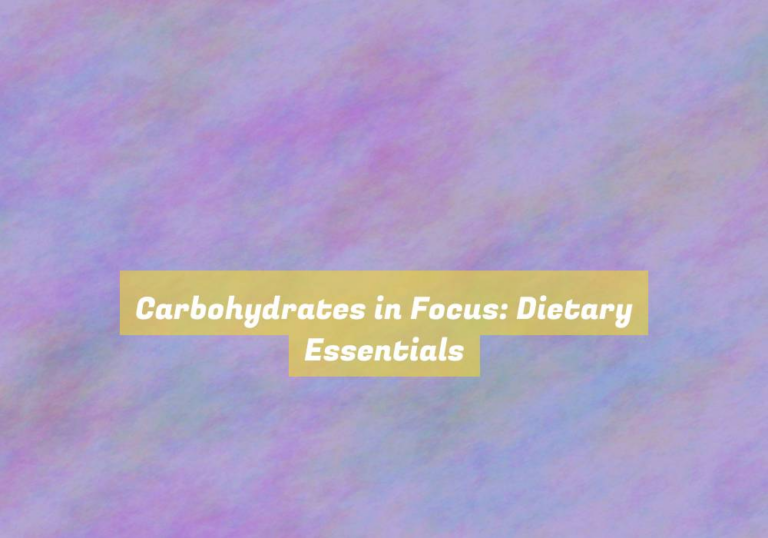Unlocking the Truth Behind Food Labels: Common Misconceptions Exposed
You might believe that the food labels on the products you purchase provide clear and accurate information about what youG??re consuming, but the reality is often more complex.
Understanding the truth behind these labels can be crucial to making informed decisions about your diet and health.
As you navigate the aisles of the grocery store, you may be surprised to learn about the deceptive nature of labels like G??naturalG??, G??low-fatG??, G??organicG??, and G??sugar-freeG??.
These common misconceptions can have a significant impact on your overall well-being, and gaining insight into the reality behind these claims is essential for making truly informed choices about the food you put into your body.
The Deceptive Nature of G??NaturalG?? Labels
When it comes to food labels, the term G??naturalG?? can be misleading and often lacks a clear definition. Many consumers assume that G??naturalG?? means the product is free from artificial ingredients, pesticides, and genetically modified organisms (GMOs). However, the reality is more complex.
The Food and Drug Administration (FDA) doesnG??t have a strict definition for the term G??naturalG??, leading to ambiguity and confusion. As a result, food manufacturers have exploited this lack of regulation by labeling their products as G??naturalG?? even when they contain high-fructose corn syrup, artificial flavors, or preservatives.
You may be surprised to learn that the G??naturalG?? label doesnG??t guarantee the absence of pesticides or antibiotics in the food production process. For instance, meat products labeled as G??naturalG?? may still come from animals that have been given antibiotics or hormones. This lack of clarity can mislead consumers who are trying to make informed choices about the food they purchase.
Decoding the G??Low-FatG?? and G??Fat-FreeG?? Claims
Be cautious when interpreting food labels that claim to be G??low-fatG?? or G??fat-freeG??, as these terms may not always indicate a healthier option. While itG??s tempting to assume that G??low-fatG?? or G??fat-freeG?? products are automatically better for your health, the reality is more complex.
Often, these products compensate for the reduced fat content by adding extra sugar, salt, or artificial additives to enhance the flavor and texture. This means that you could end up consuming more unhealthy ingredients than youG??d with the full-fat version.
Additionally, some fats are actually beneficial for your body, such as the unsaturated fats found in avocados, nuts, and oily fish. By opting for G??low-fatG?? or G??fat-freeG?? alternatives, you may be missing out on these valuable nutrients.
ItG??s important to carefully read the ingredient list and nutritional information to make an informed decision about whether a G??low-fatG?? or G??fat-freeG?? product is truly a healthier choice. Remember, moderation and balance are key when it comes to maintaining a healthy diet.
Unveiling the Truth About G??OrganicG?? Labeling
Before assuming that G??organicG?? labeled products are always the healthier choice, itG??s important to understand the complexities and potential misconceptions surrounding this term.
While the G??organicG?? label implies a more natural and environmentally friendly production process, it doesnG??t necessarily equate to being healthier or more nutritious for you.
The term G??organicG?? mainly refers to the way agricultural products are grown and processed, focusing on the use of natural fertilizers and pesticides while avoiding synthetic ones. However, organic foods can still be high in sugar, salt, or unhealthy fats, so itG??s essential to read the nutrition labels for a complete understanding of the productG??s healthfulness.
Additionally, some studies have found that organic produce may not have significantly higher nutritional value than conventionally grown produce. Furthermore, organic labeling doesnG??t guarantee that the product is free from contaminants, so itG??s crucial to handle and prepare organic foods with the same care as non-organic foods.
Ultimately, while choosing organic products may align with your values and support sustainable agriculture, itG??s essential to approach organic labeling with a critical eye and consider the complete nutritional profile of the food.
Understanding the Reality Behind G??Sugar-FreeG?? Claims
Beware of assuming that products labeled as G??sugar-freeG?? are always a healthier choice. ItG??s easy to fall into the trap of believing that G??sugar-freeG?? automatically means a product is better for you, but the reality is often more complicated.
Many G??sugar-freeG?? products replace sugar with artificial sweeteners, which may have their own set of health concerns. Some artificial sweeteners have been linked to negative effects on metabolism, gut health, and even an increased craving for sweet foods.
Additionally, G??sugar-freeG?? products can still be high in other unhealthy ingredients such as saturated fats and refined carbohydrates. ItG??s crucial to read the full ingredient list and nutrition label to understand what youG??re really consuming.
Furthermore, some G??sugar-freeG?? products may not contain added sugars but could still be high in natural sugars, such as those found in fruit juices.
Always be cautious and informed when choosing G??sugar-freeG?? products to ensure youG??re making a genuinely healthier choice for your well-being.
Conclusion
Next time youG??re at the grocery store, remember to look beyond the labels and do your research. DonG??t fall for deceptive marketing tactics. Understand what the labels really mean and make informed choices for your health.
DonG??t be fooled by terms like G??naturalG??, G??low-fatG??, G??organicG??, and G??sugar-freeG??. Arm yourself with knowledge and make the best decisions for you and your family.
Your health and well-being are worth the extra effort.







